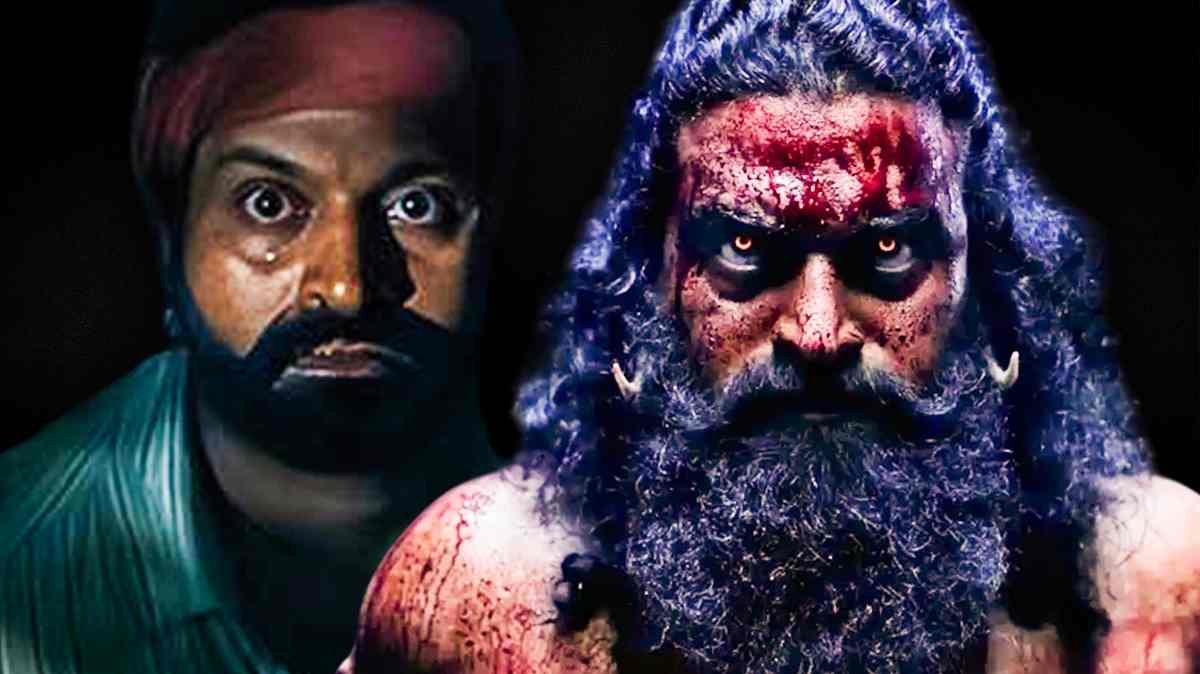'Kantara Chapter 1' Ending Explained & Film Summary: Will There Be A Third Sequel?
1 hour ago
Kantara: Chapter 1’s ending brings us back to the original film, a sequence where young Shiva wonders what happened to the well that physically existed there many years ago, when the Naga tribe lived in harmony with nature, only to be forced to withstand the invasion and destruction of the land they’re meant to protect. The film is a winding tale of 3 cultures, 2 of which seem to be propelling the story about class and greed in a similar manner to the original film; however, the third element here is the Kadapa tribe, a people who want to steal the power of the deities for themselves rather than worship them. At its heart, it’s a film about unison. It’s about bringing people together to marry tradition with contemporary ideology. Kantara: Chapter 1 takes us straight to the heart of the Bangra Kingdom, a prosperous state with trade and all modern amenities, but with a mighty and greedy king. This is where the legend began, but the questions remain: Does the Brahma-rakshas actually exist? Will Berme be able to unite the people? What does this set up for the next film?
Spoiler Alert
What Happened To King Vijayndra?The opening of the story from the past introduces King Vijayndra, a prosperous but greedy king, who is desperate to go to Eshwara’s Garden of Bloom. One fine day, he decides to take his son to Kantara. Here, all his soldiers are killed by a mythical fire, leaving only the king and the boy alive. At first, it seems this is a warning to Vijayndra, and he will be set free to go tell the people of Bangra not to set foot in Kantara ever again, but Vijayndra is snatched into the forest, leaving the boy with a burn mark on his face alive to go tell his kingdom the legend.
Vijayandra’s son, Rajashekhara, who has to take the throne as a young boy, grows up fearing the world of Kantara. He builds walls and tells everybody never to go there, talking about a Brahma-rakshas that will bring destruction to anyone who does. However, his son is the opposite of everything Rajashekhara wishes him to be. He’s unjust, greedy, and aggressively egotistical, making him eager to do what his father never could: step foot in the Garden of Bloom. On the other hand, it appears his younger sister, Kanakavati, a baby who was stillborn and miraculously came back to life (I’ll get into that in a bit), seems to be the perfect heir for her father. She knows how the trade of the kingdom works, she’s friendly with the people, and she’s just in her decisions. But is that all?
Who Are The Kadapa Tribe?When Kanakavati was born, she was handed to the tribal Kadapa people. A woman fed Kanakavati her own breast milk, something that could’ve been considered taboo because she’s a tribal woman, but the power of her milk got the blood in Kanakavati’s veins flowing. However, the Kadapa people take on the role of caregivers for the baby for a little while. This is when their greed takes hold in the little, harmless baby. The blood of the king, who was greedy, and the milk of the people who want power, combined, make for a terrific villainess if you ask me.
The Kadapas live in a different part of the forest, bound by their master, who uses lorises to keep their area enchanted so nobody can come inside. However, Berme and his gang end up there after having seen trade in the kingdom of Bangra. While initially, he didn’t know what was happening, after a period of observation and becoming friends with Peppe, the son of the main tradesman in the kingdom, he realized that he had to do it too. After noticing how well their own resources do in trade, Berme decides to go deeper into the forest to find more produce. This is when he comes face-to-face with the Kadapas. The interesting thing to note here is that Berme isn’t greedy, but he is arrogant and has an ego. This is what pushed him to go see the kingdom, because Kulashekara, the new king, decided to make an uninvited visit to Kantara. To be fair, there wouldn’t be a story to tell if he hadn’t gone to the kingdom, but he’s also partially to blame for the big fight that ensues. During their first clash with the Kadapas, Berme loses one of his men, but a tiger, protector of the forest and working the mighty god’s will, protects Berme and kills one of the Kadapa men to save Berme. This makes it clear that Berme is no ordinary man; his supernatural powers come straight from the divine entity he so fully believes in.
But this is when we learn that the Kadapas were binding the power of the deity and harnessing it for their benefit. This is why Berme and his people heard a screeching sound when they tried to enter their area. However, Berme frees the binding when he frees a loris, stabbed into a tree trunk through its chest. The Kadapas use black magic to bind the powers of the deity, and Berme is the only one who can be possessed by Guliga to save the day.
What Happens to Kulashekara?Kulashekara’s greed doesn’t die down when he encounters the people of Kantara; in fact, he thinks that they’re the ones protecting the Garden of Bloom, and since Berme had the audacity to come to their kingdom and trade, even enchanting his sister (though that’s a story for later), Kulashekara decides to destroy their land. When he gets there with his soldiers, he sets everything on fire, killing innocent people, children, women, and even the elderly. Baidi, Berme’s adoptive mother, along with a few other elderly people of Kantara, starts to pray to Panjurli, wondering where their Ulaya is when they need him the most. This is what brings Berme back to his homeland, dashing through the forest and reaching in the nick of time, watching Kulashekara kill his mother with a slick slit in the throat, right in front of his eyes. But the prayers have been heard, and Berme gets possessed by the deity who must protect the land and its people. Kulashekara initially believes Berme is putting on a show before realizing it’s all real and getting murdered with a bite to the throat.
When Berme comes back to his senses, he sees the devastation caused by Kulashekara’s arrogance. In the meantime, the shivling that is meant to be placed in the temple in Bangra ends up cracking, which means the gods are unhappy. Kanakavati rushes to Kantara to seek help from the people whose deity is upset with the people of Bangra. Berme doesn’t want to join hands with a culture who only care to destroy, but Kanakavti wonders if it’s him or his deity speaking. Berme has no choice but to join forces with the people of Bangra. Anyway, it seemed he was quite in love with Kanakavti too. They rebuild the temple, doing everything right, worshipping their gods and appeasing them. It’s beautiful to see everyone work in tandem, and though the king was greedy and egotistical, the people were always kind and merciful. The temple is built, and the work of the people of Kantara is done. They return to their homes, which have now been restored to normalcy too, thanks to Sankappa, the Bangra architect, who was shunned by his people and accepted by the people of Kantara (he even gave them irrigation). However, soon after their return, the young children of Kantara start to get sick. At the same time, Berme remembers the wise words of his mother, “Never trust those who want to step into the Garden of Bloom.” He himself has handed the power of the deity on a platter to Kanakavati, the true villain of this story.
How Does Berme Defeat the Arrogant Bangras?Berme’s mother guides him into the well he was initially found in. It’s important to note that he was protected by the tiger and seemed to have been born straight out of the well itself. This well is the powerhouse of Lord Shiva. We don’t know where Berme came from, or who his parents might’ve been; was he just a gift to the people of Kantara? I’m not sure, but maybe this is going to be a part of a different story. Berme falls into the well that he was found in while in a trance with his dead mother guiding him. A wall breaks down within the cave he finds himself in, and Berme is led to a shivling in the middle of a picturesque cave of waterfalls. However, he hears a sound, which leads him to find a man-beast hybrid—the Brahma-rakshas. Berme fights the Brahma-rakshas, and during the fight, the massive beast flings him straight to the front of the linga, which has a trishul (trident) next to it. When Berme grabs the trident, the Brahma-rakshas realizes he’s looking at the lord himself, as a snake, appearing out of nowhere, twirls around him and takes its place around his body. An incarnation of the lord himself. With this, he also releases the binding of the Kadapa people, releasing the deities and saving his people. At the same time, Maayakaara, whom I can compare with the monkey from the Lion King, who disappears with the wind, fights the king, but at the last moment, gets killed by the Kadapa leader.
Berme and the Brahma-rakshas in the form of a fiery beast then return to Bangra, where a war between the Kantaras and Princess Kanakavati is playing out. Earlier in the film, while romancing him, she got her women to cut his nails and hair to make it seem like she was grooming him, though it was all for a blood ritual to bind the deity and call upon her greedy grandfather to possess her own father and give her the strength to fight the people of Kantara. She’s fearless because she has both the Bangra army and the black magic of the Kadapa tribe behind her. But she’s wrong to believe that she can face the gods herself. The tiger comes along with Berme, killing the Kadapa leader swiftly. What’s left is Kanakavati and her father (well, grandfather). With her eyes blazing, she steps in front of her father, because she knows the deity would never kill a woman, the womb of nature herself. However, she’s wrong yet again, because while Guliga will not harm a strand of hair on her head, his sister Chavundi will not hold back (look, it’s Dussehra). Chavundi takes form with a red flag draped around her shoulder and kohl lining her eyes from the ashes of the fire of destruction. Kanakavati can’t save herself even if she tries. Berme, in the form of Chavundi, picks up the princess, bringing her down on his knee and snapping her neck with one swift motion. He then uses the trident to kill the king (three generations, destroyed just like that). While this is a victory for Berme and his people, Kulashekara’s daughter is still alive. We have already seen a burning passion in her, which makes me wonder if she’s going to be an important character in another installment of the film.
In Kantara: Chapter 1’s ending, Berme returns to the well he was found in and jumps into it in a trance. There’s no trace of him again. This well is the same place where Shiva and his father disappeared, years later. The film ends with young Shiva wondering where the well went now, but this is the opening for the next installment of the film, a legend for another time. However, there are some things we can’t ignore here. Specifically, the words that the storyteller tells Shiva when he ends the story of Berme. He finally upholds Dharma again. The killing of the evil king and princess brings a light that will shine on the past, present, and future. This is why the people of Kantara worship and trust in the bhoot kola so deeply. Now, this is a theory born entirely out of my own brain, but I can’t help but think that the well is a fantastical element to the films. I feel like it is a time capsule that can stop time or merge past, present, and future. How it can do so, I’m not entirely sure yet, but considering all the men disappear into this well, it means that they’re likely converging somewhere, no? But let me know what you think of this theory. On the other hand, this film again talks about the divide between local tribes and invaders. Technically, the story is not too different, because it’s about protecting what exists in nature while growing as people, too. It’s about harmony between past and future. About people coming together, despite their differences, to create a world of harmony. Ultimately, I hope I’ve been able to put the story together and get into some of the important details of this extravagant story.
...Read the fullstory
It's better on the More. News app
✅ It’s fast
✅ It’s easy to use
✅ It’s free









